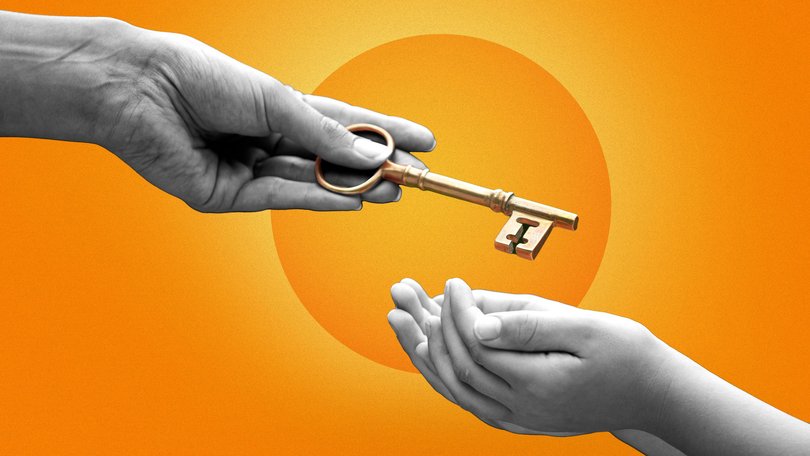KATE EMERY: The great wealth transfer will further divide between the haves and have nots

Like fat free ice-cream and outdoor music festivals, Australia’s looming great wealth transfer sounds better on paper than reality.
The great wealth transfer is the euphemistic name for the looming movement of an estimated $3.5 trillion in assets from ageing baby boomers to their (mostly) gen X or Millennial kids.
Obviously, this is already pretty bad news for the boomers, who mostly have to die for their considerable asset pile to be passed on to the living relatives they leave behind (or the local cat shelter if those relatives didn’t visit quite enough in the later years).
Sign up to The Nightly's newsletters.
Get the first look at the digital newspaper, curated daily stories and breaking headlines delivered to your inbox.
By continuing you agree to our Terms and Privacy Policy.But it’s also bad news for younger generations.
Because the great wealth transfer has the potential to widen the wealth gap between those who can afford a house, a car and Uber Eats twice a week and those who can barely afford the terrible rental they’re sharing with three roommates and a bad case of black mould.
First, a recap for those who missed the first season of this unfolding drama: Australia’s wealth gap is already at a 20 year high (at least) and getting worse.
In the past 20 years the average household wealth of Australia’s richest (the top 10 per cent) has grown by 84 per cent. At the same time, the average wealth of the lowest 60 per cent rose just 55 per cent. That’s according to a 2024 report from the Poverty and Inequality Partnership, which also found that wages for the country’s richest were rising faster than for the poorest: up 4.9 per cent v 3.3 per cent).
So the rich have been getting richer and the poor have been getting poor.
How wide could that gap grow?
If you want a visual metaphor, consider the Volvo Trucks ad featuring Jean-Clause Van Damme. You know the one: it starts with a close-up of Van Damme’s face, then pulls out to reveal that he has a foot on the wing mirrors or two trucks driving backwards.
To the strains of Only Time by Enya, one truck starts to move sideways and Van Damme performs an epic split until his legs are parallel to the ground.
That wide, basically.
What we have is the prospect of the wealthiest generation in history (that’d be the boomers) passing on the wealth they have been allowed to accumulate in part because of a tax system set up to benefit them, to a comparatively small number of kids (compared to those generations whose only realistic option for family planning involved abstinence).
For as long as there have been people and things, people have died and passed on their things to those left behind.
My knowledge of homo erectus stems almost entirely from half-remembered social studies classes but I wouldn’t be shocked to learn those distant ancestors of ours left behind stone tools to be enjoyed by their kids.
What makes this great wealth transfer worthy of the name is the scale of it: the Productivity Commission estimates inherited assets will rise from about $120 billion a year to $500 billion over the next two decades or so. Boomers are richer and have fewer kids than the generations before them.
This phenomenon is particularly significant in Australia because we’ve experienced a housing, sharemarket and mining boom. The rising value of a whole bunch of asset classes — rather than just working hard and saving well — has made a lot of boomers rich.
Australia also has lower death duties than the US and the UK (more on that in a minute).
How to address this looming wealth inequality time bomb has become more of a political problem than an economic one.
Increased taxes on superannuation, to stop people from stockpiling more wealth than they need in retirement to take advantage of the lower tax rates, is one option. An estimated one-fifth of all withdrawals from super are already via bequests. On Treasury numbers, that could rise to one-third by 2060.
The Federal Government may be heading in that direction with its proposal for super deposits over $3 million to be taxed more.
Australia could also reintroduce the inheritance taxes that were axed 50 years ago — an idea floated by think tank Think Forward.
However, even for a Federal Government enjoying the political capital of Albanese 2.0, a widespread new tax seems like a reach.
Tackling the housing crisis, which is at the heart of Australia’s inequality problem, is a must. But, governments are reluctant to do anything to bring house prices down because two-thirds of the country are homeowners (or at least mortgage-owners).
And so the great wealth transfer will arrive with a vengeance and wealthy Australians will get wealthier and poorer Australians will get poorer and little else will change as those trucks get further apart except that, presumably, Van Damme’s thighs will really start to kill.
